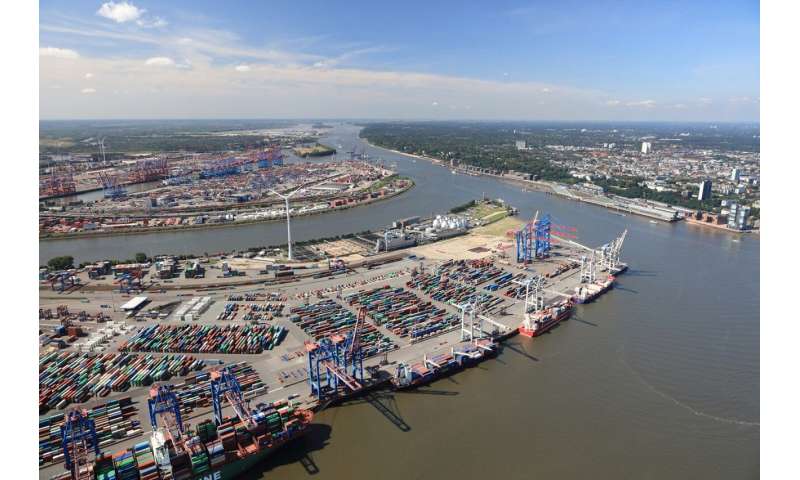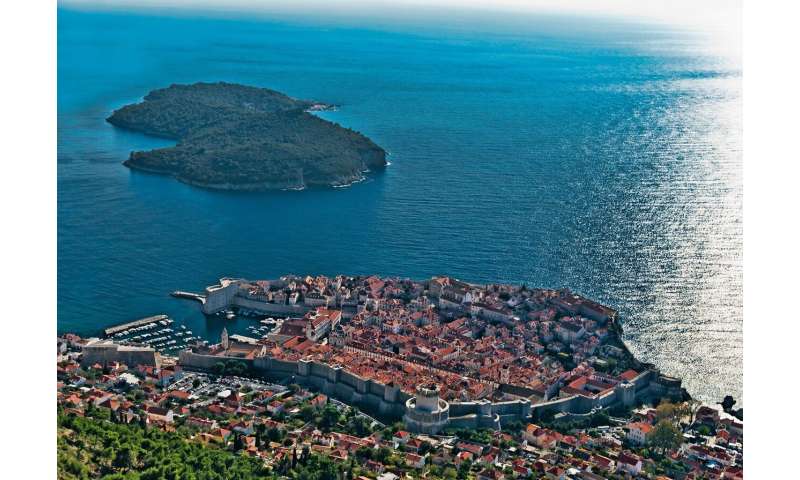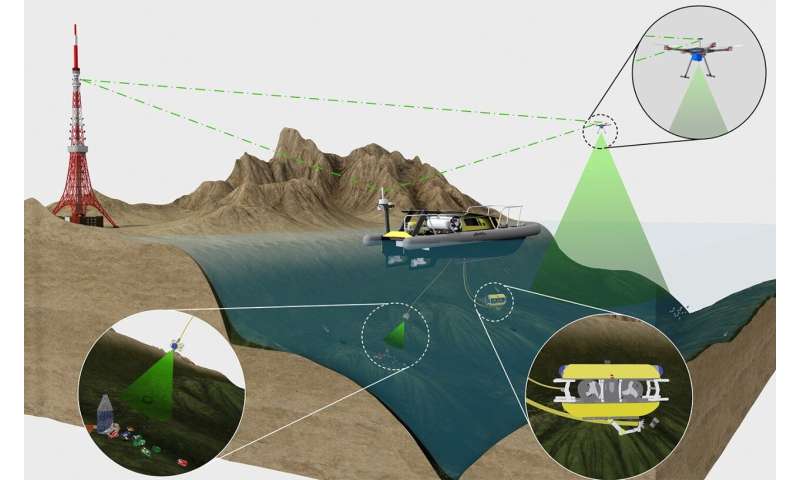Q&A: Researchers set out to clear the seabed of plastic

Eighty-six million metric tons of plastics end up in the oceans every year, with devastating consequences for marine life, nature and, ultimately, for us humans. The vast floating patches of plastic carpeting the water's surface, some as large as entire countries, are only the tip of the iceberg. Around 90 percent of this garbage ends up on the seabed. The Fraunhofer Center for Maritime Logistics and Services CML and an international network of partners want to be the first to tidy up this mess with a project called SeaClear. An interview with project managers Johannes Oeffner and Cosmin Delea follows.
You aim to collect litter on the seabed in the SeaClear project. Why?
Oeffner: Marine pollution is one of the most important global problems. It affects the environment, the economy, security, health and culture. Plastics do not degrade easily, so they are likely to remain in the sea for hundreds of years. Considering that forecasts expect plastic production to quadruple by 2050, we will have a huge problem if we fail to take action. According to the World Economic Forum WEF, the ratio of plastic to fish in 2014 was one to five—by 2050 there could be as much plastic waste as there are fish.
Many approaches to skimming plastic debris from the surface of seas have been put forward. What is your concept?
Oeffner: We're concentrating on cleaning up the seabed first, especially in coastal areas where pollution is particularly heavy. In the SeaClear concept, we are making use of various robotic vehicles that are connected to each other. An autonomous or remote-controlled mothership (unmanned surface vehicle, USV) is supported by two underwater robots (remotely operated vehicle, ROV) and an aerial vehicle or drone (unmanned aerial vehicle, UAV). We deploy the drone and a robot to chart the litter on the surface and in the water column. The second ROV makes use of this information and uses a custom-designed gripper and a suction device to collect the mapped garbage on the seabed and discard it to collective bin.

What technologies are behind all this?
Delea: We use multi-agent control methods for heterogeneous robots to synchronously steer all autonomous vehicles. This means that one robot's change of position is acknowledged by the other robots. Each robot has the built-in capability toadapt to these changes without human intervention. Although we do issue a command, it is specifically addressed to one robot, while the other robots will notice the change in pose and react if necessary. We use deep-learning algorithms to detect and distinguish waste from marine fauna and flora. Specifically, we combine different sensory systems such as conventional and multi-spectral cameras or acoustic sensors to obtain relevant data about the waters and, after several training sessions, to online detect and classify marine waste.
How do you train the autonomous robots?
Delea: Detection and classification require intensive training. The first steps for both are to use information from publicly available sources, such as large online databases that provide footage of marine life. Then we conduct further training with dummy targets. Before the final demonstrations takes place, preliminary trials are held to assess their performance.
Coastal areas are very different. Where do these trials take place?
Oeffner: We are currently testing the technologies in two different scenarios at two locations at depths of 20 to 30 meters. We want to demonstrate the process while port operations are underway with the existing infrastructure and fixed procedures in Hamburg's port. This is why this scenario focuses on the industrial area of the port. The coastal scenario in Dubrovnik, Croatia, addresses the tourism sector and is aimed specifically to clean the waters at tourist hot-spots. The first trials took place at both locations in spring. Further tests are slated for Dubrovnik in late summer after the trials were suspended because of corona.

What are the biggest challenges in this project?
Delea: The challenges at the two test sites are different: The waters at Hamburg are very hard to analyze because of their turbidity and the low visibility. Moreover, currently there are no clear statistics on the type and amount of underwater waste in the port area. This is where we want to further develop the robustness and individual features of the SeaClear system and get it market-ready. To this end, we have brought stakeholders from the port of Hamburg on board to look into SeaClear as a future port service. The great difficulty in Dubrovnik is that public access cannot be restricted. On the other hand, this means a number of additional safety measures will be necessary, which will have to be taken when the system is tested on-site. But the visibility in these waters is close to ideal, so the main objective is to validate the overall system and show its complete set of features.
How are you tackling these problems?
Delea: In Hamburg, we are trying to fuse data from different sensors when mapping the marine litter in order to assess what kind of subsea litter is to be found in these waters. We are using mainly acoustic sensors because of the limited visibility. In Dubrovnik, we are going to install additional safety mechanisms on the flying drone, with some assistance from the sensors on the mothership. The object here is tominimize safety issues and prevent collisions.
And how are you going to ensure that fragile ecosystems like coral reefs are not damaged?
Delea: This issue is not present in Hamburg, while the Croatian test site also has few coral reefs. But when the final SeaClear system will be deployed, it will use optical sensors and AI to distinguish the coral reefs, avoid difficult/hazardous procedures to collect just the litter.
Which part of the project is the Fraunhofer CML's responsibility and who are the other partners in this venture?
Oeffner: CML is the project's technical coordinator and is responsible for integrating the overall system as well as designing and developing the underwater basket to hold the collected waste. What's more, we are developing a virtual monitoring center that sends commands to the robots and disseminates their data. The project also includes setting up the communication network and the server infrastructure needed to provide SeaClear services to the various clients via web interfaces. The consortium is composed of the Technical Universities of Munich, Delft, Dubrovnik and Cluj-Napoca as well as SubSea Tech Marseille, the Hamburg Port Authority and the DUNEA Regional Development Agency Dubrovnik. The goal is for the latter two organizations to alsooperate and use the developed system after the project is wrapped up.
Explore further
Provided by Fraunhofer-Gesellschaft
No comments:
Post a Comment